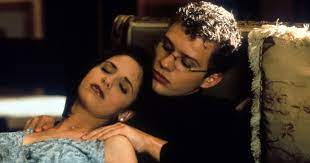It wasn't until the 1960s, with the easing of Hollywood censorship, that mainstream cinema began to incorporate more explicit content. Filmmakers pushed boundaries, introducing themes such as violence, drug use, sex, and nudity, often shocking audiences.
While the first sex scene in a mainstream film appeared in 1933's "Ecstasy," starring Hedy Lamarr, it was relatively tame. It took several more decades for more explicit depictions of sex and nudity to become common. Michelangelo Antonioni's 1966 film "Blow-Up" featured nudity and implied sex, though not explicitly graphic scenes, yet its success was a milestone for cinema, paving the way for more provocative works.
By the 1970s, unsimulated erotic scenes became more prevalent, seen in films like "Caligula" and "In the Realm of the Senses." Today, erotic imagery in both Hollywood blockbusters and independent films is commonplace.
However, some films include erotic scenes that feel gratuitous and unnecessary. Often, they're inserted to attract viewers and generate controversy, sometimes reflecting the objectifying perspective of certain male directors.
The most gratuitous erotic sequences:
Blonde (Andrew Dominik, 2022)
Andrew Dominik’s Blonde was a reprehensible and exploitative portrayal of Marilyn Monroe’s life, reducing her to a troubled, tragic character and a mere victim. Ana de Armas took on the role of the Hollywood icon, frequently depicted as either cowering in corners, weeping, or unclothed.
It's evident that Dominik approached Monroe's story without genuine concern for her well-being, instead perpetuating a damaging media narrative portraying her as a pitiable and defenseless individual. In an interview with Sight and Sound, he even referred to the film as "a rescue fantasy." However, it also seems to serve as a sexual fantasy, with numerous scenes featuring de Armas in various states of undress or engaged in sexual encounters scattered throughout. Additionally, there's a rape scene included without historical accuracy – Dominik simply inserted it into the narrative.
Martin Scorsese's 2013 film, The Wolf of Wall Street,
endeavors to portray the extravagant lifestyle of Jordan Belfort, a businessman infamous for his fraudulent activities that inflicted significant harm on many lives. While the film intends to illustrate his downfall, it often indulges excessively in opulence and decadence. Scorsese presents numerous scenes depicting characters immersed in sex and drug consumption.
While some argue that these portrayals, including instances like Leonardo DiCaprio snorting cocaine off women's bodies, are essential to underscore Belfort's lifestyle, others find them gratuitous. Particularly concerning are the depictions of women solely as objects, with scant development of female characters beyond these roles. Scenes featuring Margot Robbie fully nude, for instance, seem superfluous and perpetuate a perspective steeped in the male gaze.
In Quentin Tarantino's 2009 film "Inglourious Basterds,"
praised as one of his finest works, critics laud the filmmaker's intense portrayal of Nazi Germany. Featuring an ensemble cast including Christoph Waltz, Eli Roth, and Brad Pitt, the movie showcases Tarantino's distinct style, intertwining fiction with historical figures like Adolf Hitler, Winston Churchill, and actor Emil Jannings.
However, a controversial scene emerges when Tarantino orchestrates a meeting between Joseph Goebbels, the infamous Nazi propagandist, and a translator. Suddenly, a brief, jarring moment unfolds as Goebbels engages in sexual activity with the translator, generating uncomfortable laughter. While intended for comedic effect, this scene feels gratuitous, reducing the translator to a mere object of sexual desire for one of history's most reprehensible figures.
Top Gun (Tony Scott, 1986)
Many argue that Top Gun carries a significant amount of homoerotic undertones, with Tarantino even suggesting that the entire film revolves around Tom Cruise's character, Maverick, grappling with his sexual identity. While this theory is intriguing, Maverick does engage in a heterosexual relationship with Charlie, portrayed by Kelly McGillis.
A somewhat forced sex scene between them has been criticized by viewers as awkward. Interestingly, this scene was added post-production based on feedback from a test audience, raising questions about its necessity.
Eternals (Chloé Zhao, 2021)
Following her acclaimed Oscar-winning film Nomadland, Chloé Zhao embarked on the creation of Eternals, the 26th installment in the Marvel Cinematic Universe. This decision raised eyebrows, as Zhao, known for her work in independent cinema, brought her unique perspective to the superhero genre. However, the film didn't quite meet expectations, as Zhao's directorial prowess struggled to fully translate into the grand spectacle of Eternals.
Nevertheless, Zhao introduced the first-ever intimate scene in the Marvel Universe with Eternals, albeit in a subtle manner. The moment features Gemma Chan and Richard Madden's characters, yet its inclusion raises questions about its relevance to the narrative. While it's noteworthy as a milestone for Marvel, its necessity within the film is debatable, leaving it feeling somewhat out of sync with the overall story.




















0 Comments